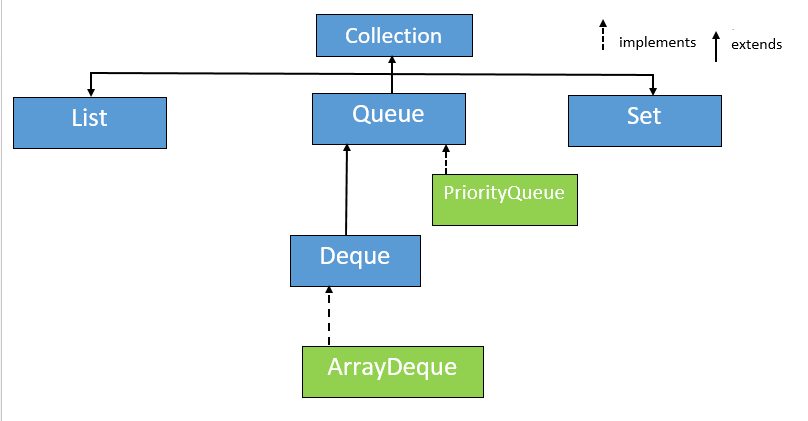
Also, extending other classes with unneeded functionality (as mentioned in #2) bloat your objects, potentially costing a lot of extra memory and performance overhead.

The synchronizations can potentially cause a significant performance hit to your application. Performance: The Vector class that Stack extends is basically the "thread-safe" version of an ArrayList. The main differences between stack and queue are that stack uses LIFO (last in first out) method. This is inconsistent with what a Stack should actually do, which is why the Deque interface is preferred (it does not allow such operations)-its allowed operations are consistent with what a FIFO or LIFO data structure should allow. Stack and Queue both are the non-primitive data structures. Inconsistency: Stack extends the Vector class, which allows you to access element by index. the freedom to extend a different class or swap out different implementations of Deque (like LinkedList, ArrayDeque). Using the Deque interface removes the dependency on the concrete Stack class and its ancestors and gives you more flexibility, e.g. A queue is a data structure that stores a collection of elements, with operations to enqueue (add) elements at the back of the queue, and dequeue (remove) elements from the front of the queue. Only one class can be extended, whereas any number of interfaces can be implemented by a single class in Java (multiple inheritance of type). A stack is a data structure that stores a collection of elements, with operations to push (add) and pop (remove) elements from the top of the stack. Object oriented design - Inheritance, abstraction, classes and interfaces: Stack is a class, Deque is an interface. Here are a few reasons why Deque is better than Stack:

The elements will be returned in order from first (head) to last (tail). Returns an iterator over the elements in this deque in proper sequence. About Press Copyright Contact us Creators Advertise Developers Terms Privacy Policy & Safety How YouTube works Test new features NFL Sunday Ticket Press Copyright. Which is also explained in the JavaDocs for erator(): Oh, and also Stack has no interface, so if you know you need Stack operations you end up committing to a specific concrete class, which isn't usually a good idea.Īlso as pointed out in the comments, Stack and Deque have reverse iteration orders: Stack stack = new Stack() Queues use Enqueue, dequeue, peek, size and. Stacks use push, pop, peek, size, and clear. This follows the FIFO (First In First Out) system. You have access to the front of the queue when removing, and the back when adding. With a queue, it retrieves data in the same order which it was sorted. There's deliberately no way to access an element by position, which Stack exposes because it's a subclass of Vector. You only ever have access to the top of the stack. Deque exposes a set of operations which is all about being able to fetch/add/remove items from the start or end of a collection, iterate etc - and that's it. Early in Java, inheritance was overused IMO - Properties being another example.įor me, the crucial word in the docs you quoted is consistent. The fact that Stack extends Vector is really strange, in my view.
Java queue vs stack code#
In the base package, create a file named Queue.kt and add the following code defining the Queue interface.For one thing, it's more sensible in terms of inheritance. Common operationsįirst, establish an interface for queues.


In this chapter, you’ll learn all of the common operations of a queue, go over the various ways to implement a queue and look at the time complexity of each approach. Queues are handy when you need to maintain the order of your elements to process later. Queues use FIFO or first in, first out ordering, meaning the first element that was added will always be the first one removed.
Java queue vs stack movie#
Whether you’re in line to buy tickets to your favorite movie or waiting for a printer to print a file, these real-life scenarios mimic the queue data structure. Section III: Trees Section 3: 8 chapters Show chapters Hide chapters


 0 kommentar(er)
0 kommentar(er)
